RHS Horticultural Advisor Deirdre McShane shares her top tips for winter pruning of apples and pears
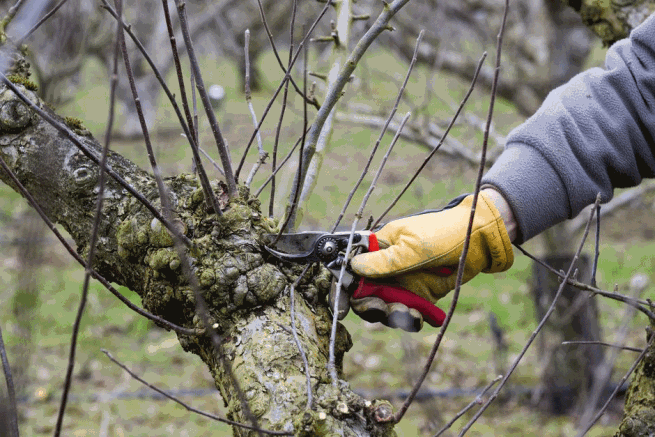
 Winter pruning of apples and pears can be a daunting task when you’re faced with a tangle of branches. RHS Horticultural Advisor Deirdre McShane shares her top tips, plus how to keep on top of codling moth to avoid maggoty apples!
Winter pruning of apples and pears can be a daunting task when you’re faced with a tangle of branches. RHS Horticultural Advisor Deirdre McShane shares her top tips, plus how to keep on top of codling moth to avoid maggoty apples!
One of the best presents I have ever received was the RHS Pruning and Training manual by Christopher Brickell and David Joyce. I wouldn’t be without it, and have since bought it for the keen gardeners amongst my family and friends. It has wonderful illustrations on fruit pruning, and as they say, ‘a picture paints a thousand words’ – it’s a great resource for those who get in a tangle over this topic.
Winter is the best time to prune your apples and pears. Pruning any time between November and early March, when the trees are leafless, allows you to see the branch structure clearly. Pruning not only keeps your trees productive, but prevents fungal infections by allowing air to circulate, whilst removing infected growth to prevent spread. Thinning out the canopy also allows more light to reach the remaining branches, ensuring the fruit ripens well.
Pruning tools (secateurs and saws) should be sharp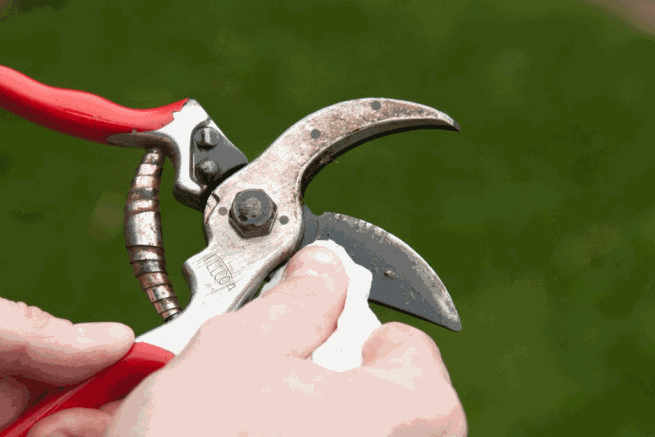 and clean, as this will reduce the risk of spreading disease and help wounds seal over faster. Clean your tools with rubbing alcohol, or a general sterilant like Jeyes fluid. I keep mine in a spray bottle for easy application.
and clean, as this will reduce the risk of spreading disease and help wounds seal over faster. Clean your tools with rubbing alcohol, or a general sterilant like Jeyes fluid. I keep mine in a spray bottle for easy application.
Getting started
The first step is to remove any crossing branches that will potentially rub together; weak spindly growth; and any damaged or diseased growth. Next, think about the overall structure. Ideally, a free-standing tree should look from a distance like a wine glass – i.e. with a clear trunk and outward-facing main branches surrounding an open centre. With this in mind, remove larger branches from the middle, or side branches that are growing into the middle. Maintaining this goblet shape lets light in and encourages better air movement.

On the main branches, shorten the previous year’s growth by a third, cutting back to either a dormant bud that’s facing in the direction you want new growth to go, or to just above a strongly growing side branch – known as a lateral. Leave most of these laterals unpruned, as they’ll develop fruiting buds for the following year (though if there are too many, you can thin some out). With older trees, you may also need to remove congested spurs (short, gnarled, fruit-bearing shoots). If so, take off the ones that are on the underside of branches as light levels here would be lower and fruit wouldn’t ripen so well.
While the above technique works well for spur-bearing apples (which is in fact most of them), for those that bear fruit on the ends of branches, you need a slightly different approach. So-called ‘tip bearers’, such as 'Blenheim Orange', 'Bramley's Seedling', 'Discovery', 'Lord Lambourne' and 'Worcester Pearmain', benefit from cutting back a proportion of older fruited branches to a younger shoot closer to the main trunk. This prevents the branches becoming overly long and breaking when laden with fruit. It also reduces congestion.
For advice on pruning other forms of trees, please see our webpages on training espaliers, creating a new cordon and pruning established cordons.
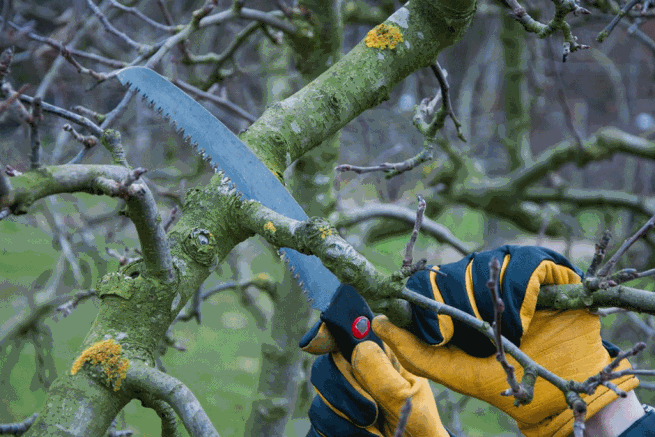 A word of caution
A word of caution
It can be easy to get carried away when pruning, removing lots of branches to sculpt the tree into shape. Whilst apple and pear trees can cope with hard pruning, removing more than a fifth of the branches in one year usually leads to the production of water shoots. These numerous, whippy, upright shoots fruit poorly and give the tree a hedgehog-like appearance. So try to avoid giving the tree an all-over ‘haircut’ by pruning selectively.
If your tree is overgrown, it’s better to stagger pruning over several years, rather than removing it all in one go, to prevent overproduction of water shoots. The ‘less is more’ adage certainly applies here. With that in mind, I take a step back and look from a distance before and after I’ve removed a branch – sometimes even making a cuppa and coming back to it with fresh eyes. If in doubt, I leave pruning the branch until next winter. Making a pile of prunings also helps me assess how much I’ve taken off.
Codling moth
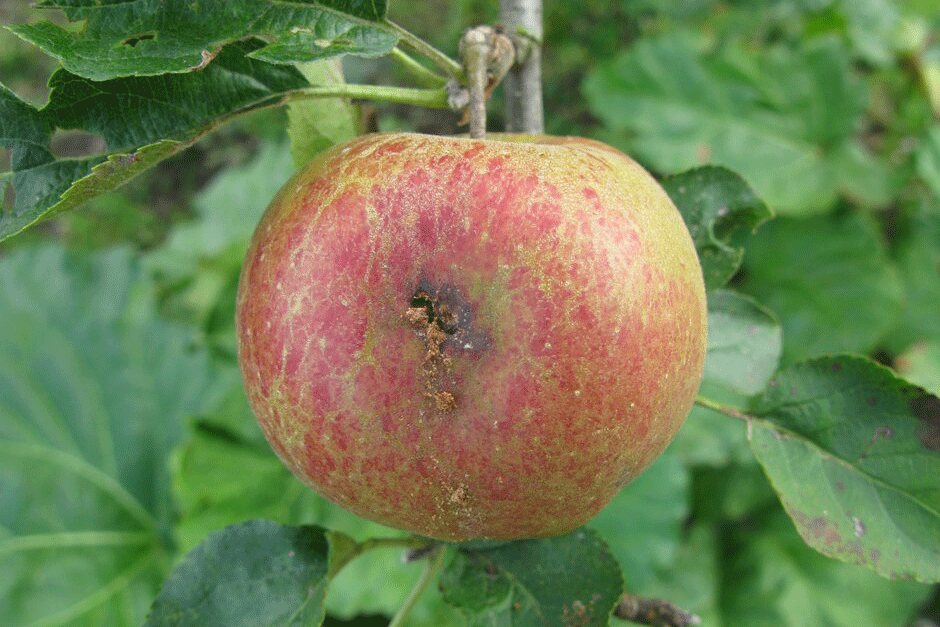 Whilst enjoying your homegrown apples and pears, you maybe disappointed to find fruit that is mushy and brown-black inside, or even discover a ‘maggot’ living inside your fruit. This damage is caused by the off-white larvae of codling moth.
Whilst enjoying your homegrown apples and pears, you maybe disappointed to find fruit that is mushy and brown-black inside, or even discover a ‘maggot’ living inside your fruit. This damage is caused by the off-white larvae of codling moth.
At this time of year these are pupating in the leaf litter beneath your fruit trees or beneath loose flakes of bark.
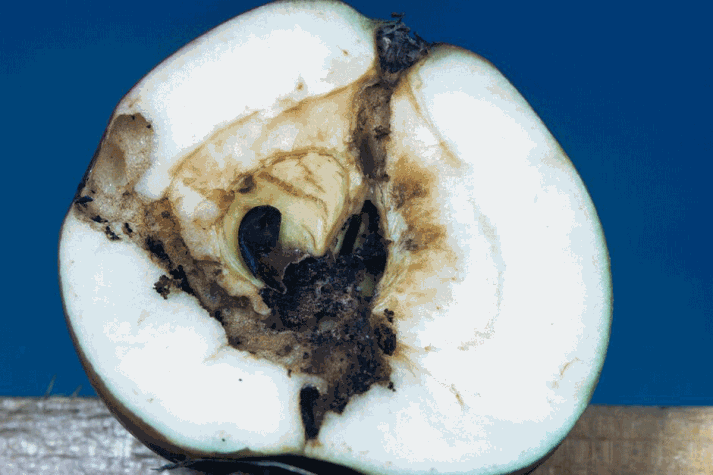 Clearing fallen leaves will remove some overwintering larvae, and gives birds access to others that have been left behind with no hiding places. Generally encouraging birds, hedgehogs and ground beetles will be invaluable in winning the battle against these insects.
Clearing fallen leaves will remove some overwintering larvae, and gives birds access to others that have been left behind with no hiding places. Generally encouraging birds, hedgehogs and ground beetles will be invaluable in winning the battle against these insects.
Unfortunately, codling moth can still fly in from neighbouring gardens, so it’s worth tolerating it as much as possible (I often just cut out the bad bits from the fruit). However, there are control measures you can use to limit their numbers. Throughout the spring and summer, you can use pheromone traps, organic insecticides and nematodes as biological control at targeted times to reduce the population and limit damage.
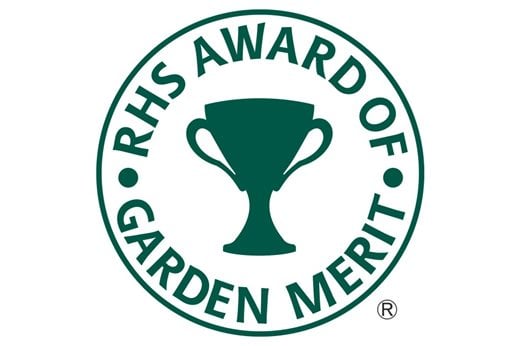 Pick of the crop
Pick of the crop
Look for the RHS Award of Garden Merit (AGM) when buying vegetable seed or small plants. You can also download the RHS lists of recommended cultivars.
You may also be interested in...
About the author - Deirdre McShane
I work part-time as a Horticultural Advisor for the advice desk at RHS Garden, Hyde Hall. As well as being a gardener for many years, I am a Mum of two and am pleased to have passed my love of the outdoors onto my children.

